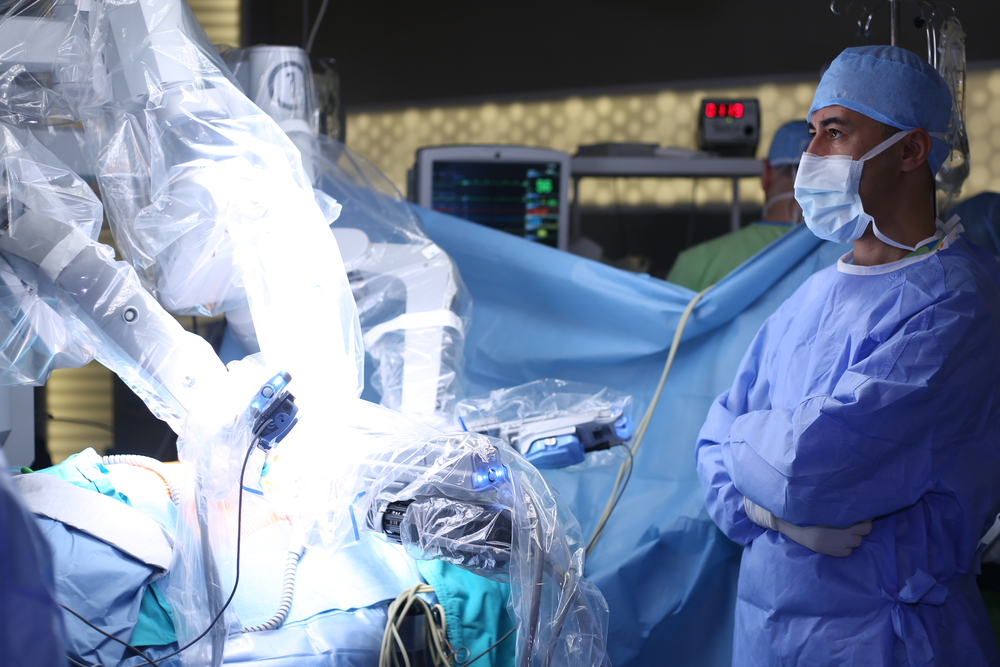
The field of surgery is ever-changing and evolving. A major revolution has happened in the last 25 years as the focus has shifted to minimally invasive surgery and subsequently to robotic assisted surgery. Minimally-invasive surgical techniques have benefitted the patients in terms of lower morbidity and mortality through lesser violation of the body’s natural barriers. The morbidity associated with open surgery like pain, discomfort, and delayed recovery was mainly due to the process of gaining access through bigger incisions. The same surgeries can now be performed through smaller cuts using minimally invasive techniques leading to lesser pain and faster recovery. In 1985 a robot, the PUMA 560, was used to place a needle for a brain biopsy using CT guidance. Robotic surgery was used for urology later. A robotic surgery has three parts. The first one is a console. Here the surgeon is seated, to take control and operate the robot. The second part is a patient-side robotic cart with four arms manipulated by the surgeon (one to control the camera and three to manipulate instruments). This cart places all the instruments that are to be used during the procedure in a specific order. Finally there is another cart that helps in providing the view to the other doctors and nurses, so they can observe the procedure. By looking inside the console, a surgeon is able to get a three-dimensional view of the patients’ internal organs. The clarity of view is similar to an open surgery. The console has brilliant options such as magnifying a particular region. This is made possible with the help of an endoscopic camera with high clarity. This kind of a method provides relief to the surgeons as well, as they are not required to stand over the patient for hours, bent in odd angles. Surgical robotic systems can augment and extend the human capabilities of surgeons. There are programming option in the robot where we can scale down the motion (a 2cm movement by the surgeon can be scaled down to 1cm movement by the robot). The robot also reduces hand tremors and hence is more precise. Due to miniaturisation and addition of the “wrist” to robotic endoscopic instruments, surgical robots have enabled procedures to be performed that are otherwise not possible with manually-controlled endoscopic instruments. It allows the surgeon to operate in increasingly smaller spaces, through increasingly smaller incisions, resulting in decreased morbidity and more rapid recovery times translating into earlier discharge from hospital and earlier return to activity and work hence reducing overall cost. Every new invention comes with some drawbacks. In robotic surgery, the primary limiting factor hampering its widespread acceptance has been financial. A lot of money goes into research and development of newer technology which is then passed on to the patients. The setting up and running of a robotic programme requires a huge investment. But with increasing competition and wider adoption of this technology, the cost will ultimately come down. A robotic platform has multiple applications and can be used by various specialties to bring down the cost. General/GI surgery, urology, cardiothoracic surgery, cardiology, neurosurgery, orthopaedics, total knee and hip replacements, ligament surgeries, surgical oncology, abdominoperineal resection, anterior resection for colorectal cancers, gynaecology, myomectomy for fibroids, radical hysterectomy for tumours, ovarian tumour removal, radiosurgery and cyberknife surgery. The future of robotic surgery looks exciting and hopeful. The advantages have now been documented by various studies. In the field of laparoscopic surgery and urology, robot-assisted surgeries are being highly preferred. — [email protected] Dr V. Rajagopal, HOD, Department of Urology, Apollo Hospitals, Hyderabad. For further inquiries contact +968 2478 7766